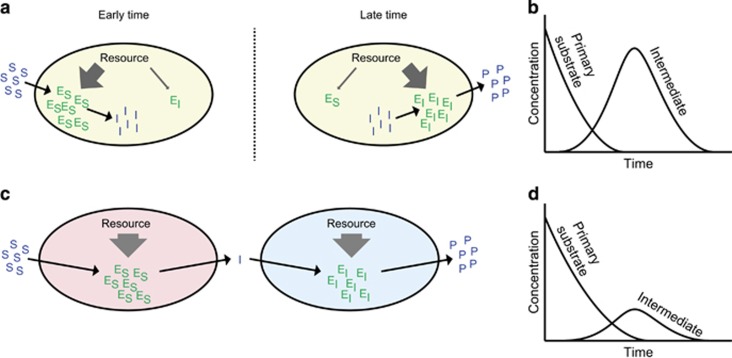Figure 1.
Hypothesis for how segregating metabolic processes among different cell types could accelerate substrate consumption. Consider a metabolic pathway where a primary substrate (S) is transformed by an enzyme (Es) into an intermediate (I). The intermediate is then further transformed by another enzyme (EI) into an end product (P). (a) If ES and EI compete for the same finite pool of an intracellular resource and ES has preferential access to that resource, then I will accumulate at early times and only be consumed at later times. (b) The consequence is the transient accumulation of I. (c) Conversely, if ES and EI are segregated into different cell types, then competition is eliminated and EI has increased access to the intracellular resource. (d) The consequence is the increased consumption and reduced accumulation of I.

